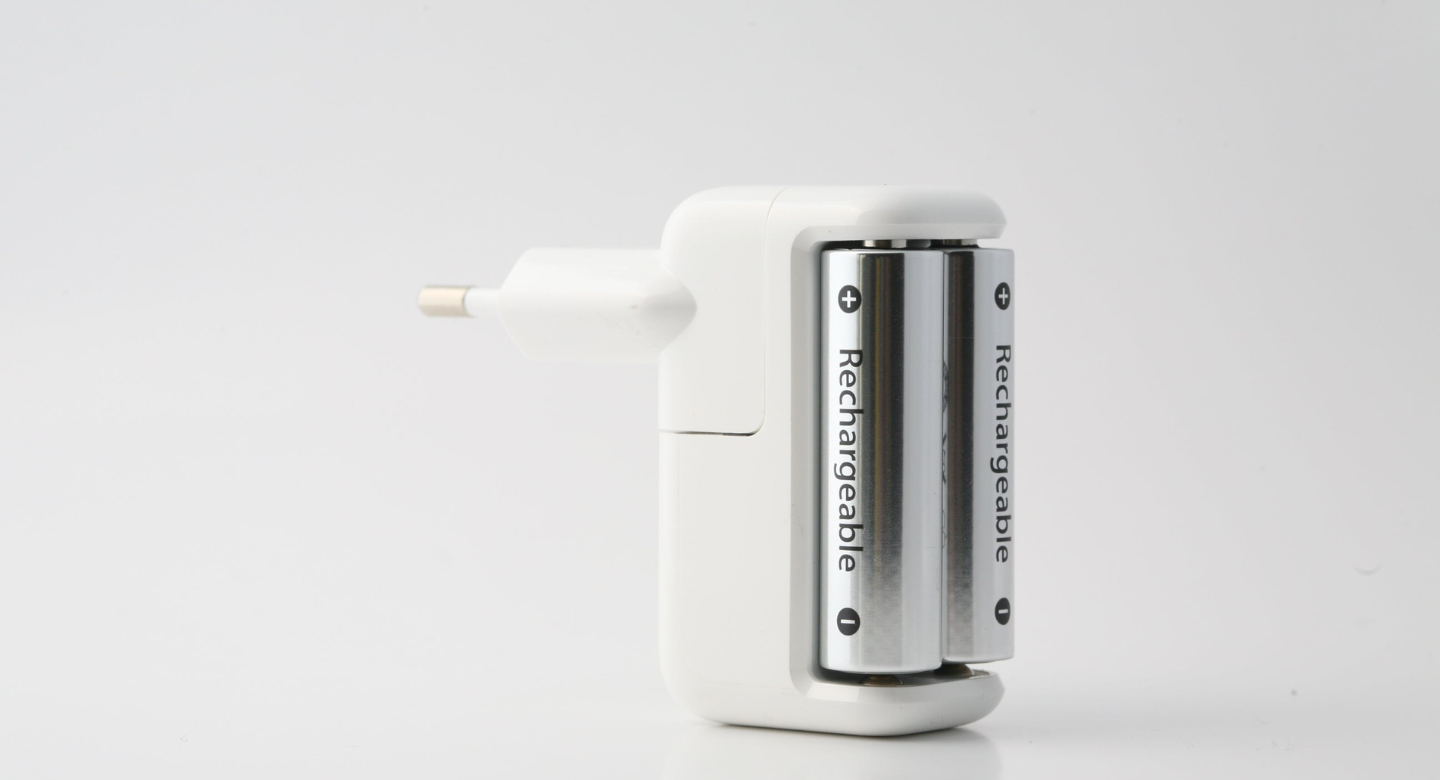3Rs of Sustainability for Batteries
The 3Rs of Sustainability for Batteries—Reduce, Reuse, Recycle—offer a practical framework for minimizing the environmental impact of the power sources that fuel our travel experiences. By embracing these principles, eco-conscious travelers can enjoy their journeys while ensuring that their battery usage doesn’t harm the stunning landscapes and ecosystems they’ve come to admire.
Table of Contents
ToggleIn an age where environmental consciousness is no longer optional but essential, sustainable travel has emerged as a crucial practice for preserving our planet’s natural beauty. As travelers, we carry responsibility not just for the memories we create, but also for the footprint we leave behind—particularly when it comes to the batteries that power our devices.
Why Battery Sustainability Matters in Travel and Tourism

Batteries are ubiquitous in the modern travel experience, powering everything from our smartphones and cameras to portable chargers and noise-canceling headphones. However, their convenience comes with significant environmental costs when improperly managed—a single discarded battery can contaminate soil and water sources for decades, while heavy metals like mercury, lead, cadmium, and lithium can leach into ecosystems and harm wildlife.
Tourist destinations, especially remote natural attractions with limited waste management infrastructure, are particularly vulnerable to battery pollution. When travelers discard batteries improperly, they contribute to toxic waste accumulation in the very places they’ve traveled to appreciate, creating a cycle of environmental degradation that threatens both local communities and future visitors’ experiences.
How Sustainable Travel Helps

Embracing the 3Rs of Sustainability for Batteries during your travels contributes to environmental protection in multiple ways. By reducing consumption, extending useful life through reuse, and ensuring proper recycling, travelers can decrease toxic waste in natural environments, reduce demand for raw material extraction, and support circular economy initiatives that transform “waste” into valuable resources.
When travelers make conscious choices about battery consumption and disposal, they help maintain cleaner environments for local communities and future visitors alike. Every rechargeable battery used instead of disposables prevents dozens of single-use batteries from entering the waste stream—a powerful example of how individual choices can collectively create significant positive impact.
How to Travel Sustainably with Batteries

Implementing the 3Rs of Sustainability for Batteries begins with thoughtful planning before your journey. Invest in high-quality rechargeable batteries and portable chargers, research disposal options at your destination, and consider solar-powered alternatives when appropriate. During your travels, carry a small container specifically for storing used batteries until they can be properly recycled.
Support accommodations and tour operators that demonstrate commitment to sustainability through battery take-back programs or other eco-friendly initiatives. Many sustainable travel experts recommend including battery management in pre-trip planning, alongside researching local customs and packing light—small preparations that can significantly reduce your environmental impact.
The Role of the 3Rs in Battery Sustainability
1. Reduce: Minimizing Battery Waste Generation

The first principle in the 3Rs of Sustainability for Batteries focuses on consuming less in the first place. Switch to high-quality rechargeable batteries that can replace hundreds of single-use alternatives over their lifetime, optimize device settings to extend battery life, and occasionally embrace unplugged experiences that reduce technology dependence while enhancing your connection with destinations.
Choose energy-efficient devices when upgrading travel gear, and plan your power needs realistically to avoid carrying excessive spares. Many sustainable travelers report that more mindful battery usage not only reduces environmental impact but also enhances their travel experience by encouraging greater presence and engagement with surroundings rather than constant documentation.
2. Reuse: Extending Battery Life

Before recycling, maximize the useful life of your batteries through proper maintenance and creative repurposing. Follow manufacturer guidelines for charging and storage to extend battery lifespan, and practice battery rotation by using older units in low-drain devices like clocks or remote controls.
Consider how partially depleted batteries might power other applications—some power banks can be repurposed from old laptop batteries, while certain types can support DIY projects or be donated to organizations that accept working used batteries for educational initiatives. Several eco-hostels and sustainable accommodations have pioneered collection programs for partially used batteries that still retain significant capacity for appropriate applications.
3. Recycle: Ensuring Proper End-of-Life Management

When batteries have reached the end of their useful life, proper recycling becomes essential to the 3Rs of Sustainability for Batteries. Research local recycling options at your travel destinations, use collection points available at many international hotel chains, or store spent batteries for recycling upon returning home if traveling in areas with limited infrastructure.
Modern battery recycling facilities can recover up to 95% of battery components for reuse in new products, creating a circular resource economy that minimizes environmental impact. Mobile applications can help locate nearby battery recycling points while traveling, making responsible disposal more convenient even in unfamiliar locations.
Sustainable Battery Production Practices

Forward-thinking manufacturers are reshaping the battery industry through innovations that support the 3Rs of Sustainability for Batteries from the production stage. These include developing batteries with lower toxic metal content, creating extended-life technologies that significantly outlast conventional options, and designing easily recyclable products that facilitate end-of-life processing.
When purchasing batteries for travel, look for brands that emphasize sustainability in their production methods and provide transparent information about their environmental initiatives. Companies pioneering carbon-neutral manufacturing facilities and batteries made with recovered materials from recycling programs represent the future of sustainable power sources for travelers.
Regulatory Insights & Battery Standards in India
India has established comprehensive frameworks supporting the 3Rs of Sustainability for Batteries through regulations like the Battery Waste Management Rules 2022, which mandates Extended Producer Responsibility for manufacturers and establishes collection centers across major cities. For travelers in India, government-authorized collection points in tourist destinations provide convenient drop-off locations for spent batteries.
The India Tourism Development Corporation has installed battery collection bins at popular attractions, while requirements for proper labeling with recycling information help visitors make informed disposal decisions. These initiatives represent important steps in addressing battery waste in one of the world’s most visited destinations, creating models that other countries are beginning to emulate.
Carbon Footprint Analysis of Batteries

Understanding the environmental impact of different battery types can inform more sustainable choices aligned with the 3Rs of Sustainability for Batteries. When considering the full lifecycle impact, rechargeable batteries produce up to 28 times less environmental damage than disposables, even accounting for the electricity used in recharging.
For destinations with reliable power access, rechargeable options like Nickel Metal Hydride (lasting 500-1000 recharges) or Lithium Iron Phosphate (lasting 1000-2000 recharges) offer significantly lower environmental impacts compared to single-use alkaline batteries. Solar rechargeable options, while having a higher production footprint, provide excellent sustainability advantages for outdoor adventures in sunny regions.
Case Studies & Real-World Impact
The 3Rs of Sustainability for Batteries have inspired innovative programs worldwide. The Galapagos Battery Initiative prevents an estimated 2.5 tons of battery waste from entering this sensitive ecosystem annually by providing visitors with reusable containers for battery storage and collection upon departure. Thailand’s Power Bank Sharing Network allows travelers to rent rechargeable power sources rather than purchasing disposables, reducing battery consumption by approximately 30% in pilot locations.
Nepal’s Trekking Battery Exchange enables hikers to swap depleted rechargeable batteries for freshly charged ones at tea houses along popular routes, eliminating the need for disposables in remote mountain regions. These success stories demonstrate how creative implementation of battery sustainability principles can protect vulnerable ecosystems while enhancing visitor experiences.
Actionable Steps for Travelers

Make the 3Rs of Sustainability for Batteries part of your travel routine with these practical actions: research recycling options before traveling, pack rechargeable batteries with appropriate chargers, use power-saving settings on devices, and never dispose of batteries in regular trash or nature. Support brands with take-back programs, spread awareness among fellow travelers, and maintain a clearly marked container for collecting used batteries during your journey.
Participate in organized clean-ups when available, consider solar-powered or hand-crank alternatives for appropriate devices, and ensure collected batteries reach proper recycling facilities. Each of these steps represents a small action that, when adopted by millions of travelers worldwide, can significantly reduce battery pollution in our most treasured destinations.
Conclusion: The Future of Battery Sustainability
As we continue exploring our beautiful planet, implementing the 3Rs of Sustainability for Batteries will play an increasingly important role in preserving the places we love to visit. The Reduce, Reuse, Recycle framework offers travelers a practical approach to minimizing their battery footprint while still enjoying the benefits of modern technology during their journeys.
The future of sustainable travel depends on collective action—when travelers make conscious choices about battery consumption, manufacturers develop more environmentally friendly alternatives, and destinations implement effective collection systems, we create a powerful cycle of positive change that ensures the natural wonders inspiring us today will continue to inspire generations of travelers tomorrow. By embracing the 3Rs of Sustainability for Batteries in our adventures, we power our experiences responsibly while protecting the environments that make travel so rewarding.
Explore More Blog
3Rs of Sustainability for Tin Packaging
3Rs of Sustainability for Old Mobile Phones
Frequently Asked Questions (FAQs) About 3Rs of Sustainability for Batteries
What are the 3Rs of Sustainability for Batteries?
The 3Rs of Sustainability for Batteries refer to Reduce, Reuse, and Recycle principles applied specifically to battery usage and disposal. This framework helps travelers minimize their environmental impact by reducing battery consumption through energy-efficient practices, extending battery lifespan through proper maintenance and repurposing, and ensuring responsible recycling when batteries reach the end of their useful life—preventing toxic materials from harming ecosystems at tourist destinations worldwide.
Why should travelers be concerned about battery sustainability?
Travelers should care about battery sustainability because improperly discarded batteries pose serious environmental risks to the destinations they visit. A single discarded battery can contaminate soil and water sources for decades with heavy metals like mercury, lead, cadmium, and lithium. Tourist destinations—especially remote natural attractions—often lack adequate infrastructure for proper battery disposal, making them particularly vulnerable to battery pollution. As frequent users of battery-powered devices for navigation, photography, and communication, travelers have a significant responsibility to manage this aspect of their environmental footprint.
How can I reduce my battery consumption while traveling?
Reduce your battery consumption by switching to high-quality rechargeable batteries that replace hundreds of single-use alternatives, optimizing device settings (lower screen brightness, airplane mode when appropriate), and embracing occasional technology breaks during your journey. Choose energy-efficient devices when upgrading travel gear, pack only the batteries you’ll reasonably need, and consider solar-powered alternatives for appropriate gadgets. Many travelers find that mindful battery usage not only reduces environmental impact but enhances their travel experience by encouraging greater presence in their surroundings.
What’s the environmental difference between rechargeable and disposable batteries?
Rechargeable batteries have a significantly lower environmental impact than disposables when considering their full lifecycle. While rechargeable batteries require more resources to manufacture initially, this upfront environmental investment is offset after just 5-10 uses. A typical rechargeable battery can replace 50-1000 disposables (depending on type and application) over its lifetime, resulting in up to 28 times less environmental impact, substantial waste reduction, and fewer toxic materials entering ecosystems. The environmental advantage increases with each recharge cycle, making them the clear sustainable choice for frequent travelers.
How can I extend the lifespan of my batteries while traveling?
Extend your batteries’ lifespan by following proper charging practices—avoid complete discharges for lithium batteries, don’t leave batteries charging overnight, and keep them at moderate temperatures (extreme heat or cold degrades battery capacity). For disposables, store them in a cool, dry place and remove them from devices during extended non-use periods. Consider using older batteries with diminished capacity in low-drain devices like clocks or TV remotes before recycling them. Regular maintenance like cleaning contact points can also prevent premature failure.
How should I safely transport batteries when traveling?
Transport batteries safely by packing them in their original packaging or insulating terminals with tape to prevent short circuits. Keep spare lithium batteries in carry-on luggage only (never checked bags) following airline regulations, which typically limit quantities and watt-hours. Store batteries away from metal objects that could cause short circuits, and use dedicated battery cases for organization and protection. For international travel, research destination countries’ regulations, as some have restrictions on importing certain battery types or quantities.
What should I do with used batteries while traveling in areas with limited recycling options?
When traveling where recycling infrastructure is limited, collect used batteries in a small dedicated container (many travelers use an empty pill bottle or sealed plastic container) and bring them home for proper recycling. Never dispose of batteries in regular trash or in nature. Some international hotel chains and tourist facilities have battery collection points even in regions with otherwise limited recycling services. Apps like “Recycle Nation” or “Earth911” can help locate battery recycling points during your travels in developed regions.
Which battery types are most sustainable for travel?
The most sustainable batteries for travelers are high-quality rechargeable lithium ion for high-drain devices (phones, cameras) and Nickel Metal Hydride (NiMH) rechargeable for standard-sized batteries (AA, AAA). For extended trips to sunny locations, consider solar-rechargeable options that eliminate dependency on electrical outlets. Lithium Iron Phosphate (LiFePO4) batteries offer excellent sustainability credentials with 2000+ charge cycles and lower toxicity than standard lithium-ion. When choosing battery-powered devices, select models with easily replaceable batteries rather than sealed units to extend product lifespan.
How are batteries actually recycled after collection?
Battery recycling processes vary by type but generally involve sorting batteries by chemistry, shredding them under controlled conditions, and separating components through various mechanical and chemical processes. For example, lithium-ion battery recycling recovers cobalt, nickel, and copper, while lead-acid batteries are processed to recover lead and plastic casings. Modern recycling facilities can recover up to 95% of battery components for reuse in new products or other applications. The recovered materials require significantly less energy to process than virgin resources, creating a circular resource economy that reduces mining impacts.
What innovations are making batteries more sustainable for future travelers?
Exciting sustainability innovations in battery technology include biodegradable batteries using natural materials like alginate (derived from seaweed), batteries with water-soluble components that reduce environmental harm if improperly disposed of, and structural batteries that double as device components to reduce overall material needs. Extended-life technologies dramatically increase recharge cycles—some newer lithium batteries achieve 5000+ cycles instead of the typical 300-500. Easily recyclable designs with standardized components and detachable elements are simplifying end-of-life processing, while energy-harvesting technologies like motion-powered charging reduce dependency on electrical charging altogether—all promising developments for eco-conscious travelers.







